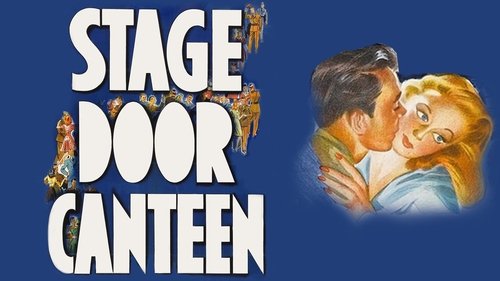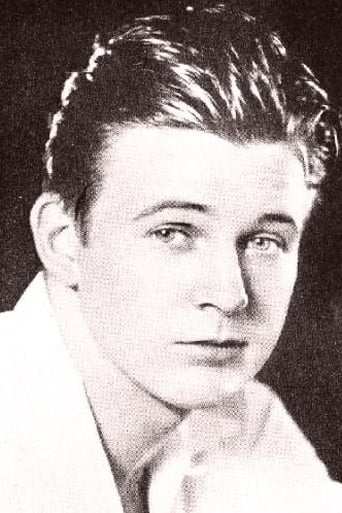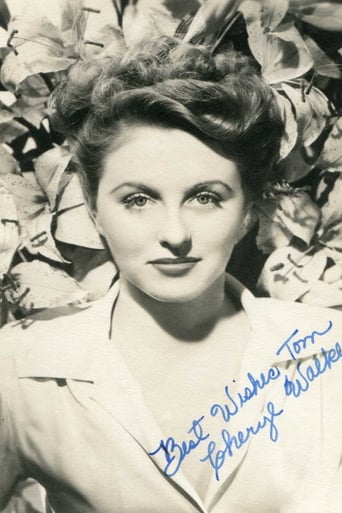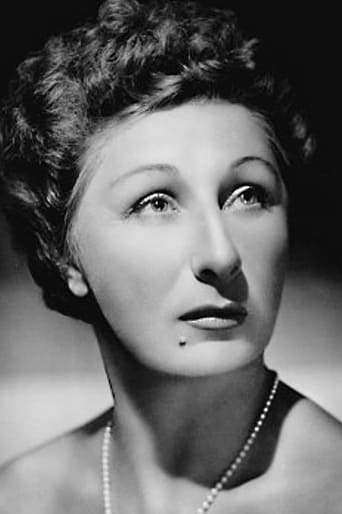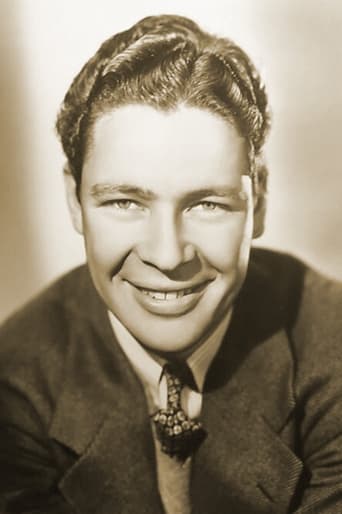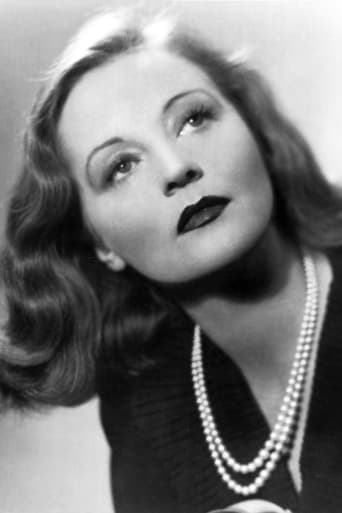Solemplex
To me, this movie is perfection.
Nonureva
Really Surprised!
Lidia Draper
Great example of an old-fashioned, pure-at-heart escapist event movie that doesn't pretend to be anything that it's not and has boat loads of fun being its own ludicrous self.
Benas Mcloughlin
Worth seeing just to witness how winsome it is.
Jimmy L.
STAGE DOOR CANTEEN (1943) is a lot of fun for what it is. What it is is a patriotic morale-booster that brings the star-studded experience of New York's Stage Door Canteen to a wartime audience. Canteens were set up by big names in show business to entertain servicemen on their home soil, free of charge.The film is chock-full of celebrity cameos by dozens of famous stars of the stage, screen, and radio. Most of the celebrities are identified in some way, although big-time classic movie fans should have fun spotting them first.The movie is a product of its time, and seen many decades removed from its original context it becomes something of a time capsule, showcasing the entertainment of a past generation. Some of the names will be a bit obscure to modern audiences (particularly stage stars who didn't make many movies).* Guest stars include ventriloquist Edgar Bergen, vaudeville comedian Ed Wynn, Oscar-winners Katharine Hepburn and Paul Muni, the jazz bands of Benny Goodman and Count Basie, and various Hollywood supporting players and entertainment personalities.Where else can you see Franklin Pangborn wash dishes with jungle man Johnny Weissmuller? Other highlights are scenes between married Broadway stars Alfred Lunt and Lynn Fontanne, a rousing song by Ethel Merman, and a comic striptease by Gypsy Rose Lee (strictly rated G -- more "tease" than "strip").Classic movie fans will get more out of this film than the uninitiated, who might not recognize the faces or even the names that go with them. The movie works best when you can appreciate the cameos.Don't expect much in the way of plot. Comedy bits and musical numbers are strung together by a story of young soldiers visiting the Canteen on leave before being shipped overseas and the girls they meet inside. The young romances reflect the bittersweet reality of wartime relationships.Cheryl Walker is lovely as the ice queen hostess who comes to the Canteen for all the wrong reasons. She's looking to further her own acting career and isn't particularly interested in showing the soldiers a good time. Marjorie Riordan is cute as one of the other hostesses, who spends time with a soldier who has no sweetheart back home.STAGE DOOR CANTEEN isn't wartime escapism. Director Frank Borzage doesn't try to distract the audience from the global situation. He keeps the audience constantly reminded, with the soldiers, sailors, airmen, and Marines that populate the Canteen and the alternately upbeat and somber patriotic tunes. Amid all the star-gazing, the film comes out in support of the U.S. servicemen, as well as America's allies in combat from Australia, the U.K., Russia, and even China. It's not hard to imagine the comfort the film must have given audiences at the height of World War II.*The similarly-themed HOLLYWOOD_CANTEEN (1944) may have more recognizable stars, boasting some of the biggest names from Warner Bros. films (Bette Davis, Joan Leslie, Joan Crawford, John Garfield, S.Z. Sakall, Ida Lupino, Jack Carson, Sydney Greenstreet, Jane Wyman, etc.).
secondtake
Stage Door Canteen (1943)This is not a great movie as movies go, but if you stick it out, you'll find an amazing parade of great music from the time, played by the real deals, from Benny Goodman to Count Basie. There are some small moments that are treasures, and they will vary depending on who you are. I know I absolutely get choked up in the short recital of Romeo and Juliet with the great Broadway star Katharine Cornell playing Juliet--behind the lunch counter. And there is Katherine Hepburn (at the end), and Yehudi Menuhin (violin and Schubert) and Ray Bolger (he was the Scarecrow four years earlier). There is a really touching moment with a group of Soviet soldiers including a young woman, whose eyes and story are just super sad...but she says, if she meets a Nazi, her "hand will not tremble."The soldiers are such regular guys, all sweetness and loneliness. It's a sad reminder of the war at its most basic--tearing young men from their innocence--and yet of course this is putting the best tilt to it all. These kinds of "canteens" were benefits of sorts, morale boosters, and this movie is a summation of that best of them. Frank Borzage (the director) was top flight a decade early (he did the famous 1932 "Farewell to Arms"), and the photography by Harry Wild (a studio mainstay) is great.Still, it's a canned affair. After an hour of entertainment there's an interlude out on the streets which is weak, and then they are back for more. There are two parallel stories outside the music--the soldiers who are about to go to war, and they are floating around fishing for company, and the women, back stage and in off hours. It's not bad stuff at all.
MartinHafer
This film and "Hollywood Canteen" are interesting little curios from WWII. During the war, actors on Broadway and Hollywood set up clubs for vets awaiting shipment overseas. In the clubs, the soldiers and sailors would be entertained by top acts and the wait staff were all actors. This film concerns the Broadway location and as such features many actors who are mostly famous for stage acting (such as Lunt and Fontaine) though there are quite a few familiar faces of actors who appeared on both coasts. Both films feature plots with fictional characters who all work or attend the Stage Door Canteen--and the actual actors who worked there are in the film as well. In light of this, the film might just have the largest list of acting credits I've ever seen! As for the plot, it's okay but is really just an excuse to feature a bazillion cameos. People like me who recognize many of the faces will no doubt enjoy the film (even if I'm not nearly old enough to have seen this film when it debuted). However, I assume younger folks who are not fans of classic films probably won't be very impressed when they see the likes of George Jessel, Judith Anderson, Ethel Waters and the like--as they'll have no idea who these folks were.I have a few observations of things you might want to look for if you see the film: Franklin Pangborn had an interesting scene with Johnny Weissmuller. Johnny takes off his shirt and Pangborn (who in the early 30s played several gay characters) stares at him admiringly.There were lots of sexual innuendos in this film. While they were all pretty mild, there's no mistaking several of them. I think the reason they were included is that this film was often sent abroad to show the troops--hence the presence of Gypsy Rose Lee! While Count Basie and Ethel Waters appeared to perform, there were very few Blacks in the film apart from them. I wonder if they weren't allowed in the Canteen and perhaps had to go to a "Colored Only" club instead. I assume this is the case, as the military was still not integrated and this would not occur until shortly before the Korean War. Also, in a Jitterbugging scene, the distant shot shows several Black men dancing--but the closeup is only White soldiers! There were lots of allied servicemen in the film (such as Australian, Chinese, Russian and Brits). I wonder if this really happened and assume foreign servicemen at the club was actually very, very rare--after all, what would they be doing in the US? Except in a few very rare cases, you think that they'd be in their own countries or at least somewhere in Europe or the Pacific.I would love to see this film on DVD where you could turn on and off credits that appeared DURING the film to tell you who all the famous folks were. My wife got pretty annoyed with me when I pointed them all out--and, oddly, whenever she seemed to ask who someone was, I didn't know! Ha! Overall, I really enjoyed this film. The plot, for what it was, was pretty entertaining but what I really liked were the many, many cameos and performances. A nice little window into yesterday.
wmoores
This movie has more stars in it than the firmament! Even more stars than its cousin Hollywood Canteen.I remember seeing it as a child in 1943 and have had it on tape for years and wonder why it has not been digitally remastered. The picture is scratchy and bumpy in parts, but nothing can spoil the innocence of our youth in uniform ready to go off to war.Cameo appearances of so many entertainers on one stage give you an idea of what vaudeville and the big band era were like. There is no plot line or even a semblance of continuity in the performances of these stars, but all are polished appearances as if the casts were on tour. Their time was donated and their patriotism shows through loud and clear.The story line involves a group of army enlistees who are given a mini furlough in New York City before they ship out. They are in awe of the big city at first but are told of a place where there is entertainment and free food. This, of course, is the canteen. Over the course of less than forty-eight hours, Dakota, Californa, Tex, Jersey, and others pair off with hostesses at the Stage Door Canteen. It is amazing how quickly love blooms in this setting. The hostesses have taken a vow not to get involved with the fellas, but how can they resist when they see the innocence, charm, and sincerity of the boys? If there are starring roles in the storyline, they belong to California and Eileen, though they are not paired as sweethearts. California (LonMcAllister)looks like a teenager and is so likable. He has never kissed a girl! Eileen (Cheryl Walker) is torn between her duty to the canteen and her love for Dakota.Some have said this movie is a morale booster or war-time propaganda. I like to think of it as the way things were during World War II.
